By Erin Payseur
Trump. Ferguson. Gay marriage. Planned Parenthood. Immigration. National Debt. Living Wage. Religion. Politics. Do you cringe when these topics come up? Do these words automatically bring to mind the same old heated sound bites we’ve heard over and over? For some of us, hot topics like these create a visceral emotional response that seems to yell & scream at us, “No, don’t go there. You better not open that can of worms! That’s too heated of a topic. That’s too sensitive. No one wins in these conversations.” Sometimes, I wish I could heed those voices. Sometimes, I wish I could opt out of the conversations. I would much rather avoid the conflict and the messiness of conversations about which I know others will disagree. After all, who likes conflict?
No matter how much those voices in me say don’t bring it up, though, truth be told, I sense a calling to talk about these issues. As a student affairs practitioner, I sense the need to guide students in making meaning of the world and to understand why these issues provoke such strong responses from all of us. I sense the need to give them courage to enter the conversation instead of run from it, to engage instead of retreating in silence. While these issues are sensitive and controversial, they are also vitally important in terms of who we want to be as a society and how we choose to live with one another in community. If we leave them to the pundits, will we solve the problems? Will we find ways forward together?
Make no mistake, engaging in this kind of work is often a messy process. It means being willing to have the hard conversations. It means being willing to listen and to love the other. It means celebrating moral courage and conviction, even in those with whom we may disagree. For my students, though, I want to give them skills to have these conversations – to go beyond the surface of the sound bites, to understand & respect multiple viewpoints, and to truly connect with others across difference to make our world a better place.
I don’t just want that for my students, though, I want that for all of us. I want it for my church, my neighborhood, my city. I want that for myself, to have the courage and conviction to listen and to learn and to love others well.
This is why I am so excited about the upcoming Civic Life Summit we are hosting in Waco. We are creating space to learn together how to have these kinds of conversations, how to engage when it is not easy, how we can talk about tough issues respectfully and identify ways to work together in community and to be community together.
If you share that desire for something better, come join us! You’ll see examples of a better kind of conversation across difference, and you will leave with tools and ideas for being a part of changing the conversation in your community.

 Erin Payseur is the Associate Director of Civic Learning Initiatives at Baylor University. She has over ten years of experience in civic engagement and higher education. As part of the Office of Community Engagement & Service, she develops sustainable frameworks civic learning initiatives to guide students in considering their roles as leaders and citizens. She has authored several articles and presented nationally on civic engagement, service, and leadership. She has a B.A. degree in Religion/ Philosophy from Presbyterian College and a M.Ed. in Higher Education & Student Affairs from the University of South Carolina. Erin is a co-founder of Baylor’s Public Deliberation Initiative and is a current fellow with the Kettering Foundation New Centers for Public Deliberation.
Erin Payseur is the Associate Director of Civic Learning Initiatives at Baylor University. She has over ten years of experience in civic engagement and higher education. As part of the Office of Community Engagement & Service, she develops sustainable frameworks civic learning initiatives to guide students in considering their roles as leaders and citizens. She has authored several articles and presented nationally on civic engagement, service, and leadership. She has a B.A. degree in Religion/ Philosophy from Presbyterian College and a M.Ed. in Higher Education & Student Affairs from the University of South Carolina. Erin is a co-founder of Baylor’s Public Deliberation Initiative and is a current fellow with the Kettering Foundation New Centers for Public Deliberation.
The Act Locally Waco blog publishes posts with a connection to these aspirations for Waco. If you are interested in writing for the Act Locally Waco Blog, please email [email protected] for more information.
By Megan Rule
Picture this – a city girl, born and raised, driving around a small town in Texas at 11 p.m. on a Saturday night looking for food but nothing’s open. The town seems to have boarded up at 8 p.m. On a Saturday night? What? How is it possible to go from the city that never sleeps, where there are concerts on Tuesday nights and diners are open 24/7, to a town that’s smack in the center of Texas with only one building that could pass as a skyscraper?
Record scratch… freeze frame…you’re probably wondering how I ended up in this situation.
I’m from Stamford, Conn., which is about 40 minutes outside of Manhattan. All I’ve ever known is the fast-paced city lifestyle, people with places to go and things to do and heels clicking as they rush to get somewhere else. A city where it seems the days are shorter and the hours go by faster. And I go to school in Waco, Texas, which is the complete opposite. Now, I’m probably over-exaggerating a bit. Waco isn’t exactly a one-horse town with tumbleweeds coming through, but the first time I came here that’s how I felt.
The first time I came to Waco to visit the Baylor campus was a culture shock. My mom and I instantly felt that as soon as we left the “Baylor bubble” we were out of place, lost in a town that seemed stuck in the 1970’s. When move-in day came around I was a little scared, this totally wasn’t my environment. And the thought of spending four years in this small town that wasn’t in my element was definitely a fear that was mixed in with the moving in nerves.
Fast-forward almost two years, and I’m finishing up my sophomore year of school happier than ever. This “small town” has come to be a town that I call home. It’s my home away from home; it somehow found a way to grab a hold of my heart. This city girl at heart found a way to enjoy the small town in Texas and make the most out of everything, finding adventure around the corner.
Waco is a really cool town. Waco is what you make of it. When your attitude is positive, it’s easier for the outcome to be positive as well.
Sure, it’s not as big as my home but it’s got its own quirks that make it so cool. Halfway through the summer I find myself wanting to come back and pick up my adventures where I left off. The thing about Waco is that everyone here is so different; the people here make the town. And because the people make the town, the people know different things about the town. If I hang out with a different group of people every night of the week, I’ll end up doing seven completely different things. From hidden spots of beauty to hole-in-the-wall restaurants to quirky thrift stores, everyone has made something completely different out of Waco so that there’s something new to find around every corner. Whenever it feels like I’ve exhausted all there is to do, someone new opens my eyes.
Waco isn’t New York City, Waco isn’t Chicago and Waco isn’t Los Angeles because Waco is Waco. Sure, there may not be concerts on random weeknights and it may be hard to find a restaurant open past 8 p.m., or anything open on a Sunday, but that’s alright because it’s a change I’ve learned to embrace. Change makes a person grow, and if it weren’t for living in the Waco culture the past few years, I wouldn’t be who I am now.
 Megan Rule is a sophomore at Baylor University pursuing a major in journalism and a minor in Business Administration and Spanish. She is on the Baylor Cross Country and Track team and is a staff writer for the Baylor Lariat. In addition to running and writing, she enjoys spending time with her dog and family.
Megan Rule is a sophomore at Baylor University pursuing a major in journalism and a minor in Business Administration and Spanish. She is on the Baylor Cross Country and Track team and is a staff writer for the Baylor Lariat. In addition to running and writing, she enjoys spending time with her dog and family.
The Act Locally Waco blog publishes posts with a connection to these aspirations for Waco. If you are interested in writing for the Act Locally Waco Blog, please email [email protected] for more information.
By Madison Albee
Transitioning from high school to college is challenging for many, especially if you are the first one in your family to pursue higher education. MCC wants to see students excel during that transition and help them achieve their goals. Two ways students can accomplish this through MCC are with High School Pathways and the First Generation Scholars Program.
High School Pathways
High school students now have the chance to get their feet wet in taking college courses, and they can stay ahead of the game once they transfer to MCC or the four-year college of their choice. MCC’s High School Pathways program allows students to enroll in college-level courses while still in high school. Students may enroll in academic courses, which typically apply toward a bachelor’s degree, or workforce courses, which provide training for a particular profession.
High School Pathways provides many advantages for students getting ready to go to college. “Pathways students have experienced college-level work and interacted with college professors prior to high school graduation. That experience can make the transition to full-time college student much less stressful,” said Program Director of High School Pathways Londa Carriveau. “The Pathways students who attend classes on the MCC campus benefit even more since they have been exposed to a larger campus, taken classes with students of varying backgrounds and ages, and handled practical matters such as an ID card and parking permit. In addition, the college credit hours earned in high school can save students money and help them either to graduate college early or to carry a lighter course load each semester.”
First Generation Scholars
If you are the first person in your family to attend college, then you have the opportunity to become a First Generation Scholar at MCC. Twelve to fifteen students are chosen each year to receive a $5000 scholarship to go towards their education.
First Generation Scholars also are presented with many opportunities during their time at MCC. They are able to experience campus enrichment activities that are only available to First Generation Scholars, and they have the chance to make presentations on and off campus. First Generation Scholars also volunteer on campus and in the community. They build leadership skills by mentoring local high school students, and they usually take a trip outside of Waco at least once a year for cultural enrichment.
Summer Transition Enrichment Program (STEP) is a summer course only for students in the First Generation program. This gives students the chance to meet other scholars and learn information that helps with the high school to college transition such as study skills, time management, personal finance and other life skills.
If you know of a high school student looking to pursue higher education, please encourage them to look into steps they can take now to achieve that goal such as MCC’s High School Pathways or the First Generation Scholars Program. To learn more information about High School Pathways you can send an email to [email protected], or call 254-299-8937. For more information about First Generation Scholars email [email protected], or call 254-299-8597.
 Madison Albee is a senior at Baylor University from Fort Worth, Texas. She is studying journalism/public relations with a concentration in marketing and is graduating this coming May. Currently Madison works for MCC as a public relations intern in the marketing and communications department. She is also the public relations assistant for Luca Magazine.
Madison Albee is a senior at Baylor University from Fort Worth, Texas. She is studying journalism/public relations with a concentration in marketing and is graduating this coming May. Currently Madison works for MCC as a public relations intern in the marketing and communications department. She is also the public relations assistant for Luca Magazine.
The Act Locally Waco blog publishes posts with a connection to these aspirations for Waco. If you are interested in writing for the Act Locally Waco Blog, please email [email protected] for more information.
by Leah Gorham, MAMFC, LPC
Welcome to the second part of the Child Abuse Awareness Trilogy Blog. As I mentioned last week, Dr. Karyn Purvis developed the idea of empowering, connecting, and correcting children to increase attachment and cohesion in families. She called it TBRI® (Trust-Based Relational Intervention®).
Having a newborn baby can be one of the most stressful times in a parent’s life – especially for new parents! The late nights, early morning feedings, and excessive crying could easily make anyone feel overwhelmed. Dr. Purvis believed that you can never hold an infant too much during the first year of their life. This is a prime development attachment stage during which a child is learning to determine who they can connect with and have a trusted relationship with. We are all longing for the same things – we need to know that we matter, we can connect with others, and we can feel safe. In order for our physical needs to be met, we need to connect with others. Connecting is about building a relationship or a bond with someone. It’s similar to when you connect to Wi-Fi, which allows you to connect to the World Wide Web. When you’re connected to your child, you get all the benefits of things they experience.
So how do we connect with our children? Connecting with a 2 year-old will look different than connecting with a 12 year-old, but there will be some overlap. One way to connect is through positive, healthy touch. A high-five, hug, pat on the back, foot massage, fist bump – whatever makes you and your child feel safe.
Lack of appropriate eye contact is a common challenge in our society. Often our heads are down while we’re scrolling through Facebook, Instagram, or other social media on our phones instead of actually maintaining good eye contact with others. Instead, we need to set our phones aside and look our children in the eyes. This will reinforce the message that they are special and what they have to say is valuable and important. I know I’m guilty of not putting my phone down, yet it is something I’m striving to be better at by looking the person I am with in the eyes.
Along with the eye contact, proximity to the child is important. It’s hard to hear what they are saying when we’re not even in the same room. How many times have we been upset by a child yelling at us from across the house? Rather, move closer to them by sitting near or next to them. It becomes easier to be open and honest with someone who is looking at my eyes, sitting near me, and holding my hand.
A great way to build the connection with your child is doing what they like to do or striving to do things together. I recently read an article about how many parents say “no” when they could say “yes.” Here’s an example for you. After a long day of work, a parent comes home and settles down on the couch. As the parent is scrolling on their phone, a kid asks if he can ride his skateboard outside. The parent immediately reacts with a “no” because it would require them to get off the couch. Instead, the parent could say “yes” and put the phone down in order to go outside with the child. While riding a skateboard is not for everyone (definitely not with my balance), being outside with the child and encouraging him is a great way for the parent to connect with their child. I’m a big advocate of family board games or card games that allow for conversations, practice in the art of winning/losing well, and non-tech time.
Often times, we don’t take care of ourselves. As the flight attendant always tells us on airplanes, we have to put on the oxygen mask first. THEN we can help others with their oxygen masks. The rationale is that we aren’t very helpful to others when we’re lacking oxygen ourselves. The same is true for nurturing. We must nurture ourselves through savoring a cup of coffee, our daily workout at the gym, connecting with our significant other/spouse/close friend, or through meditating. We must practice self-care. I have found taking walks through nature to be stress relieving as I’m able to breath in the fresh air. It can look different for each of us, yet the basis is that we must strive to nurture ourselves so we can nurture others. Next week, I’ll finish this blog series with a final blog on correcting.
 Leah Gorham, MAMFC, LPC, is the Team Lead at the STARRY-Waco Counseling office that offers free counseling for children and families. She has been a Kid’s Hope Mentor for the past five years and is currently part of Leadership Waco.
Leah Gorham, MAMFC, LPC, is the Team Lead at the STARRY-Waco Counseling office that offers free counseling for children and families. She has been a Kid’s Hope Mentor for the past five years and is currently part of Leadership Waco.
The Act Locally Waco blog publishes posts with a connection to these aspirations for Waco. If you are interested in writing for the Act Locally Waco Blog, please email [email protected] for more information.
by Leah Gorham, MAMFC, LPC
In early March, a Waco man was arrested for allegedly hitting a child in the face. The story was followed with additional arrests in other instances involving individuals who had sexually abused different children. According to the Children’s Advocacy Centers of Texas, 185 children in the state of Texas become victims of abuse each day. That is a staggering statistic that keeps me wanting to serve and empower more families. April is Child Abuse Awareness and Prevention Month and the Child-Safe Alliance is making efforts to reduce and eventually end all types of child abuse. STARRY is honored to partner with them by providing free counseling for children and families as part of the DFPS STAR program.
Child abuse prevention is a cause that is near and dear to my heart. I work with its victims on a daily basis and have become an advocate for child abuse prevention since I was a child. I remember being in elementary school when I first realized people were capable of hurting others. While some may call it “discipline,” leaving bruises and marks is never okay. Raising kids is difficult when you’re constantly being mom-shamed on social media for letting your kids eat that extra piece of candy. (Mostly because you’re so tired of the constant whining and screaming and all you want is a little peace and quiet!) Besides, we tell ourselves, My parents did that and I turned out okay. But … did we really? The only way to change the next generation is to do a little self-work. And the result could have a HUGE impact in the lives of our children.
What is one way to help families reduce the risk of child abuse and sharpen their parenting skills? I’m glad you asked! Trust-Based Relational Intervention® (TBRI®) is the brainchild of Dr. Karyn Purvis and TCU. From her research, Dr. Purvis found that empowering, connecting, and correcting children can help reduce child abuse and increase attachment and cohesion in families – especially children from hard places. Dr. Purvis published a book called Empowered to Connect, which I highly recommend you read. Over the next three weeks, I’m going to blog about the three principles outlined in the book and how to implement them into your life (with your current family or maybe your future family).
The first principle is empower. We all desire our children to succeed in life through their actions, education, emotions, relationships, etc. Empowerment focuses on using the child’s strengths and fostering a healthy view of self. Power struggles occur in relationships because we all desire to feel in control. Giving your child choices allows him or her to share the control. A word of caution helps set boundaries for the choices. Rather than saying that they can have any kind of snack after school, give them a choices of pretzels, veggie sticks, cheese crackers, or fresh fruit as options for the snack. It will help you keep your sanity and it’ll help you be able to say “yes” to more options. This will also build your child’s confidence in the fact that that they have power and can make good decisions. When kids feel in control of a few things, they are more likely to make better decisions and poor behaviors will likely decrease. There may be underlying issues too, so don’t be afraid to seek counseling for additional support. Next week, I’ll talk more about ways to connect with your child.
 Leah Gorham, MAMFC, LPC, is the Team Lead at the STARRY-Waco Counseling office that offers free counseling for children and families. She has been a Kid’s Hope Mentor for the past five years and is currently part of Leadership Waco.
Leah Gorham, MAMFC, LPC, is the Team Lead at the STARRY-Waco Counseling office that offers free counseling for children and families. She has been a Kid’s Hope Mentor for the past five years and is currently part of Leadership Waco.
The Act Locally Waco blog publishes posts with a connection to these aspirations for Waco. If you are interested in writing for the Act Locally Waco Blog, please email [email protected] for more information.
by Craig Nash
Over the past year I have used this space to highlight the “embarrassment of riches” Waco has with regards to organizations and individuals who devote themselves to addressing poverty and alleviating food insecurity in our most vulnerable citizens. We truly are a model for what can happen when stakeholders in a community see a need and spring into action to ensure that the need is met. Long before out-of-towners were trekking to the Heart of Texas to linger around two abandoned, rusted out grain silos, they were coming here to learn how to organize around a common good from our many churches and nonprofits who have been at this for a long time. I hate to think what this city would be without all of this, but I wonder sometimes if, in the process of all this helping, we have inadvertently created a situation that we need to be helped out of?
And I’m not talking about the “savior complex” that do-gooders often get labeled with, though that is certainly a concern. But that is a diagnosis best left to professionals, not armchair therapists looking for a reason to assuage their guilt over not being a part of social action. Instead, I’m referring to the lines of demarcation that are reinforced in communities between those who are giving help and those who receive it.
There’s a quote from Fred Rogers that makes the rounds on our social media feeds when a tragedy of some kind occurs—
“When I was a boy and I would see scary things in the news, my mother would say to me, “Look for the helpers. You will always find people who are helping.” To this day, especially in times of disaster, I remember my mother’s words and I am always comforted by realizing that there are still so many helpers – so many caring people in this world.”
Quick, without thinking, when you read this, who do you picture in your mind as the “helper?” If you are like me, you thought of paid, professional helpers—Cops; Firemen; EMT’s; Doctors; maybe clergy. But more importantly what do these helpers look like in your mind? Their vocations aside, do they look like people you go to church with, have over for cookouts, or sit next to at the bar during Happy Hour? Or are they people from “other” neighborhoods, who go to “other” churches and frequent “other” establishments of commerce? It’s likely that they looked more like the former than the latter. They did for me.
We have fairly fixed categories in our minds for who the helpers are and, conversely, who is receiving help. In some ways this is inevitable. But when we aren’t deliberately conscious of this, we create harmful lines of separation and, really, of elevation. These lines not only heighten the stigma of needing help, they also make it difficult for the helpers to make connections with their neighbors, connections not based on what can be given away, but what can be mutually shared with each other. Helpers need to be open to be helped, and not just in the sense of being “blessed by helping,” but in actually being in a place of dependency on “the other.”
I don’t know this looks like across the board, though I do have some possibilities swirling in my mind, and I suspect you do as well. I’d love to hear how you, dear Act Locally Reader, wrestle with the idea of breaking down these lines of distinction between “helper” and “helped,” and if there are any practical suggestions you have found to guide our community along. Do you see anyone in Waco doing this especially well? In your “dream world,” how does this play itself out? Please share your thoughts in any of the numerous venues we share our thoughts these days— comment sections of Act Locally or Texas Hunger Initiative, when you see me at the coffee shop or when you decide you want to email me your thoughts at [email protected]. Especially helpful thoughts and conversation may just make it in my next Act Locally Blog.
 Craig Nash has lived in Waco since 2000. Since then he has worked at Baylor, been a seminary student, managed a hotel restaurant, been the “Barnes and Noble guy,” pastored a church and once again works for Baylor through the Texas Hunger Initiative. He lives with his dog Jane, religiously re-watches the same 4 series on Netflix over and over again, and considers himself an amateur country music historian.
Craig Nash has lived in Waco since 2000. Since then he has worked at Baylor, been a seminary student, managed a hotel restaurant, been the “Barnes and Noble guy,” pastored a church and once again works for Baylor through the Texas Hunger Initiative. He lives with his dog Jane, religiously re-watches the same 4 series on Netflix over and over again, and considers himself an amateur country music historian.
The Act Locally Waco blog publishes posts with a connection to these aspirations for Waco. If you are interested in writing for the Act Locally Waco Blog, please email [email protected] for more information.
by Krystal Wilson
 The Greater Waco Advanced Health Care Academy is a unique and innovative program that provides a challenging learning environment to foster student success in the healthcare industry while preparing students for future health care careers. A collaborative partnership exists with Baylor Scott and White Hillcrest Hospital, Providence Hospital, McLennan Community College, Waco Independent School District and multiple school districts including Bruceville-Eddy, Connally, La Vega, Lorena, McGregor, Mexia, Midway, Riesel, Robinson, and Troy High Schools. Through this community partnership, students from the Greater Waco area are provided with the opportunity to participate in hands on learning with a specific focus on patient care. Participating junior and senior level high school students spend half a day at the academy and the remaining portion of the day at their home campus. During their time at the Health Care Academy, students receive valuable classroom experience, and an opportunity to perform clinical rotations in the local hospitals and nursing homes in the area. This allows students to work side by side with certified nursing assistants, licensed vocational nurses and registered nurses in actual health care facilities.
The Greater Waco Advanced Health Care Academy is a unique and innovative program that provides a challenging learning environment to foster student success in the healthcare industry while preparing students for future health care careers. A collaborative partnership exists with Baylor Scott and White Hillcrest Hospital, Providence Hospital, McLennan Community College, Waco Independent School District and multiple school districts including Bruceville-Eddy, Connally, La Vega, Lorena, McGregor, Mexia, Midway, Riesel, Robinson, and Troy High Schools. Through this community partnership, students from the Greater Waco area are provided with the opportunity to participate in hands on learning with a specific focus on patient care. Participating junior and senior level high school students spend half a day at the academy and the remaining portion of the day at their home campus. During their time at the Health Care Academy, students receive valuable classroom experience, and an opportunity to perform clinical rotations in the local hospitals and nursing homes in the area. This allows students to work side by side with certified nursing assistants, licensed vocational nurses and registered nurses in actual health care facilities.
Our Program
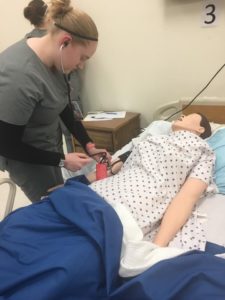 Our program is organized into two distinct pathways. First year students receive instruction in Anatomy and Physiology, World Health Research and Health Science Clinical and Theory classes. This coursework allows students to obtain their Texas Nurse Aide certification and attend clinicals at various long-term care facilities throughout the school year. Second year students explore Pathophysiology and participate in the Practicum in Health Science courses, allowing them to attend clinical rotations at both Providence and Baylor Scott and White Hillcrest Hospitals to focus on acute patient care and career exploration. All students are concurrently enrolled in their traditional high school courses including English, History and Math at their home high school campus to ensure all graduation requirements are met. Dual credit options are also available for qualifying students hoping to get a head start on college courses.
Our program is organized into two distinct pathways. First year students receive instruction in Anatomy and Physiology, World Health Research and Health Science Clinical and Theory classes. This coursework allows students to obtain their Texas Nurse Aide certification and attend clinicals at various long-term care facilities throughout the school year. Second year students explore Pathophysiology and participate in the Practicum in Health Science courses, allowing them to attend clinical rotations at both Providence and Baylor Scott and White Hillcrest Hospitals to focus on acute patient care and career exploration. All students are concurrently enrolled in their traditional high school courses including English, History and Math at their home high school campus to ensure all graduation requirements are met. Dual credit options are also available for qualifying students hoping to get a head start on college courses.
Our Facilities
We are housed in the newly renovated Viking Hills Elementary where we are equipped to provide students with wonderful lab spaces to practice skills and techniques. Our twelve bed simulation lab allows students to manipulate programmable and positioning mannequins and complete patient care skills prior to working on residents and patients in clinical settings. This year we received approval to become our own certified nurse aide testing site. This will 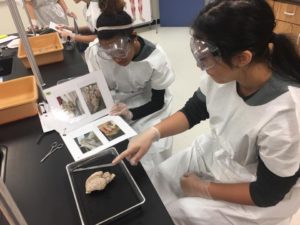 allow our students to complete their CNA test on campus, in a familiar location. Research and the use of technology is an important focus at the academy. Our computer lab provides access to thirty desktop computers often used for research projects, online activities, and dual credit courses. We are also equipped with a mobile laptop cart and a science lab with a primary use of dissections for Anatomy and Physiology.
allow our students to complete their CNA test on campus, in a familiar location. Research and the use of technology is an important focus at the academy. Our computer lab provides access to thirty desktop computers often used for research projects, online activities, and dual credit courses. We are also equipped with a mobile laptop cart and a science lab with a primary use of dissections for Anatomy and Physiology.
Our Faculty and Staff
This unique program employs healthcare workers with strong content knowledge and industry experience to transition into the teaching profession to work with our students. Our staff includes a registered nurse, several licensed vocational nurses, a simulation lab coordinator and a laboratory technician.
More Information
 GWAHCA opened its doors in August of 2015 and continues to grow. The academy utilizes community input and guidance from an advisory board to explore ways to meet community needs and serve student interests to determine the best career pathways for future expansion. Students must apply each year to attend with the application window opening from January-March. If you would like more information about the Greater Waco Advanced Health Care Academy visit us at www.gwahca.net or check us out on Facebook for the most recent academy pictures and updates.
GWAHCA opened its doors in August of 2015 and continues to grow. The academy utilizes community input and guidance from an advisory board to explore ways to meet community needs and serve student interests to determine the best career pathways for future expansion. Students must apply each year to attend with the application window opening from January-March. If you would like more information about the Greater Waco Advanced Health Care Academy visit us at www.gwahca.net or check us out on Facebook for the most recent academy pictures and updates.

 Krystal Wilson has worked with Waco Independent School District for 15 years serving at the elementary, middle and high school levels as a teacher, instructional specialist and campus administrator. She lives in Waco with her husband, Clint, and their two children, Grady and Maggie.
Krystal Wilson has worked with Waco Independent School District for 15 years serving at the elementary, middle and high school levels as a teacher, instructional specialist and campus administrator. She lives in Waco with her husband, Clint, and their two children, Grady and Maggie.
The Act Locally Waco blog publishes posts with a connection to these aspirations for Waco. If you are interested in writing for the Act Locally Waco Blog, please email [email protected] for more information.
By Brett Greenfield
The complexity of the human brain is utterly fascinating. The brain holds the mechanisms that allow humans to breathe, speak, move, think, and act in the world. It also contains our ability to understand our senses, emotions, and memories. The intricate movement of electricity, chemicals, and blood throughout our brains and bodies only adds to the depth of understanding required to understand the brain. Trying to know what is going on in our own heads, much less trying to learn what is going on in someone else’s is a difficult task. Our decisions, memories, thoughts, feelings, senses, and so much more filter through the complex web of our working brain. Despite its complexity, there are fundamental functions of the human brain that when understood, provide a depth of insight for understanding ourselves and others in a way that allows each person to be more understanding, empathetic, and compassionate to others.
From our earliest moments in life, our brains do some heavy lifting to ensure we get what we need to survive. When babies cry, they are using their voice to tell their caregivers they are hungry, tired, dirty, or maybe just need a little love and reassurance. Each and every time a baby cries and there is a loving caregiver present to meet their need the brain activates its complex systems that begin to form the foundations of trust in relationships, language, physical health, and other important functions. As children grow up and become teenagers and adults, these basic needs never go away, they simply get more complex along with their brains and bodies.
Unfortunately, many children do not have this same experience of getting their needs met. The brains of these children continue to develop, but the already complex systems required to function become confused, making it more difficult to function. The human brain is pretty good at knowing what it needs to do to survive. This is why the brain communicates the basics of food, sleep, cleanliness, and love from the beginning. Ideally, loving caregivers meet these needs and take up the responsibility for a child’s survival. When this cannot or does not happen, children take up the responsibility for their own survival. It is not easy to live in survival mode all the time. It is also not easy to live with someone else who is constantly in survival mode. This feeling of constantly being in survival mode is one that is far too familiar for many families. And many of these families find themselves asking, “What is going on here?” “What are we doing wrong?” “What are we supposed to do?” These are big, daunting, real life questions. There is certainly no easy answer to any of these questions, but there is hope.
It would take a lifetime to learn even a fraction of what is going on in every person’s brain, but there is no better time to start than now. MCH Family Outreach is pleased to once again be hosting the “Empowered to Connect” conference. This unique opportunity gives parents, professionals, caregivers, and community members the chance to learn more about how children develop and grow, and what to do to support this growth and learning. This information is beneficial for all children, and is imperative for children for whom life has not always been safe or stable. Raising a family can be challenging for everyone, and too many families feel they have to do it alone. Empowered to Connect is an opportunity to learn more about yourself and your children surrounded by people willing to learn and grow together.
If you, your organization, or someone you know is interested in attending the Empowered to Connect Conference (April 7-8), click HERE for more information. Admission is FREE, so be sure to register by March 31st while there are still seats available!
 Brett Greenfield is social worker in Waco, TX. He is a graduate of the Diana R. Garland School of Social Work and currently serves as a Case Manager with MCH Family Outreach. He is passionate about working with families in the community and offering community education in trauma-informed care, attachment, and family relationships.
Brett Greenfield is social worker in Waco, TX. He is a graduate of the Diana R. Garland School of Social Work and currently serves as a Case Manager with MCH Family Outreach. He is passionate about working with families in the community and offering community education in trauma-informed care, attachment, and family relationships.
The Act Locally Waco blog publishes posts with a connection to these aspirations for Waco. If you are interested in writing for the Act Locally Waco Blog, please email [email protected] for more information.

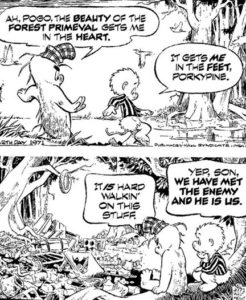 We have met the enemy and he is us.
We have met the enemy and he is us.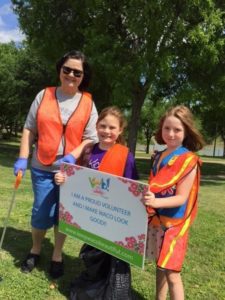 Keep Waco Beautiful
Keep Waco Beautiful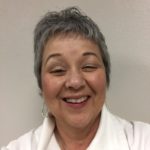 This week’s Act Locally Waco blog post is by Anna Dunbar. Anna is the Operations Administrator for the City of Waco Public Works. She is responsible for informing Waco residents and businesses about recycling and waste reduction opportunities as well as solid waste services in Waco. Her husband is a Baylor professor and her daughter is a graduate student at Baylor University. She is president of the board of Keep Waco Beautiful and is a member of The Central Texas Audubon Society and Northwest Waco Rotary. If you would be interested in writing for the Act Locally Waco blog, please email
This week’s Act Locally Waco blog post is by Anna Dunbar. Anna is the Operations Administrator for the City of Waco Public Works. She is responsible for informing Waco residents and businesses about recycling and waste reduction opportunities as well as solid waste services in Waco. Her husband is a Baylor professor and her daughter is a graduate student at Baylor University. She is president of the board of Keep Waco Beautiful and is a member of The Central Texas Audubon Society and Northwest Waco Rotary. If you would be interested in writing for the Act Locally Waco blog, please email